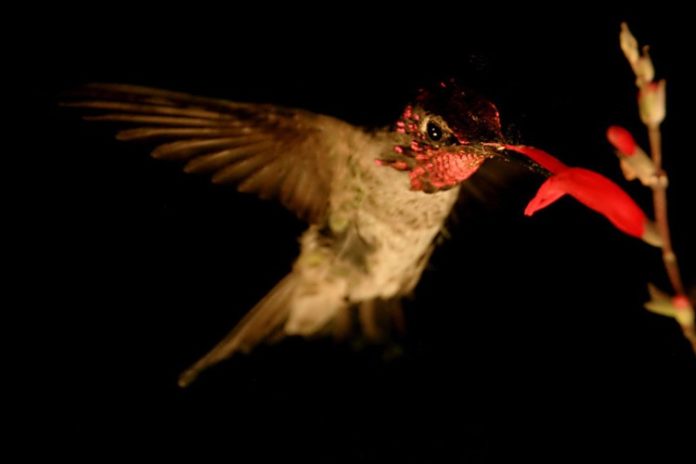
Did you know that your backyard hummingbird feeder is more than just a source of sweet nectar for these tiny birds?
It turns out that the sugar water they drink can undergo fermentation, producing alcohol.
This fascinating discovery has prompted scientists to investigate how alcohol influences hummingbird behavior and whether it is a natural part of their diet.
Let’s delve into the intriguing world of hummingbirds and their unexpected affinity for alcohol.
Biologist Robert Dudley from the University of California, Berkeley, conducted an experiment with hummingbirds visiting a feeder outside his office.
The study aimed to determine how hummingbirds respond to sugar water with varying alcohol concentrations.
Three male Anna’s hummingbirds were observed, and the results were published in the journal Royal Society Open Science.
Alcohol Attraction: Surprisingly, the study found that hummingbirds are attracted to sugar water containing up to 1% alcohol by volume, finding it just as appealing as plain sugar water.
However, when the alcohol content increased to 2%, the hummingbirds consumed only half as much. This suggests that there may be a threshold beyond which the birds are less interested in drinking the solution.
Moderate Tipplers: Although hummingbirds consume a substantial amount of ethanol relative to their body mass, they do not become intoxicated.
Hummingbirds metabolize alcohol and sugars quickly, preventing any significant effects. They are, in a way, moderate tipplers, carefully regulating their intake.
The research conducted by Dudley and his colleagues is part of a broader project examining the role of alcohol in animal diets, especially in tropical regions where fruits and nectar ferment naturally.
While systematic studies on alcohol consumption by animals are scarce, several studies indicate that animals, including primates, consume alcohol when presented with the opportunity.
What’s Next? The next phase of this research involves measuring the natural alcohol content in flowers and determining how frequently birds consume it. Dudley plans to expand his study to include Old World sunbirds and honeyeaters in Australia, further exploring the consumption of alcohol by nectar-sipping birds worldwide.
Understanding the relationship between animals and alcohol can provide valuable insights into human alcohol consumption patterns.
By studying how animals naturally interact with ethanol, scientists hope to gain a better understanding of the evolutionary factors that may influence human attraction to alcohol. This knowledge could potentially shed light on alcohol consumption and abuse in modern society.
The enchanting world of hummingbirds continues to surprise us. These tiny, vibrant creatures not only rely on nectar for sustenance but may also consume small amounts of alcohol through fermented sugar water.
As scientists continue to explore the intriguing connections between animals and alcohol, we gain a deeper understanding of the natural world and ourselves.
Source: UC Berkeley.



